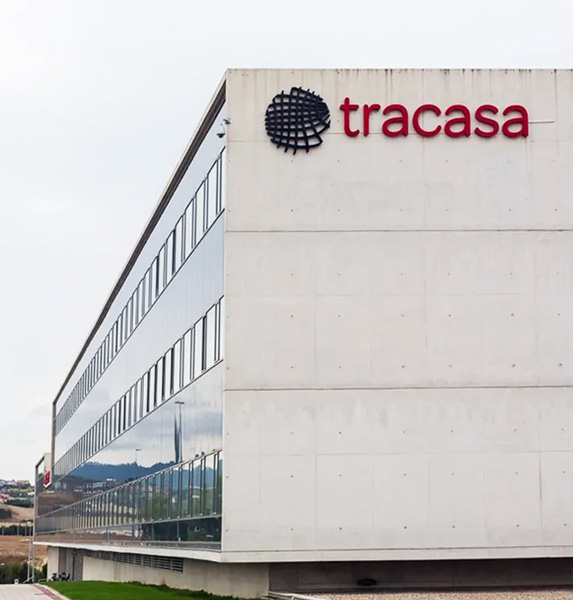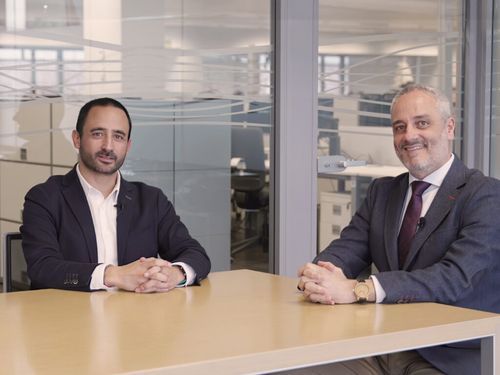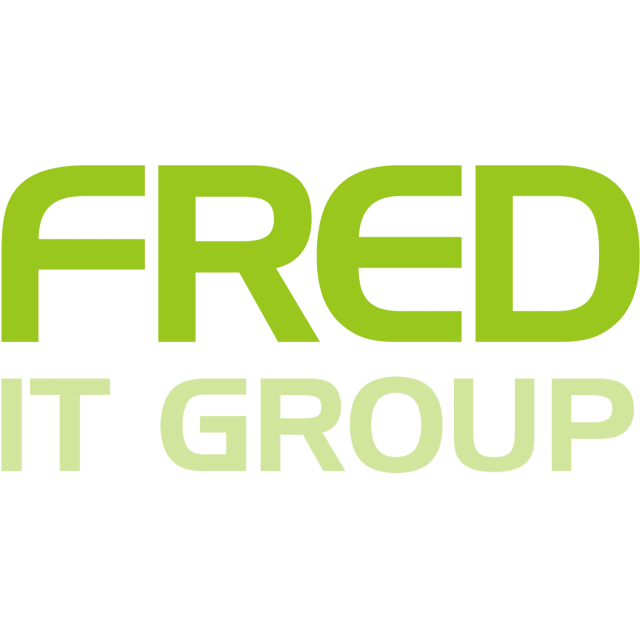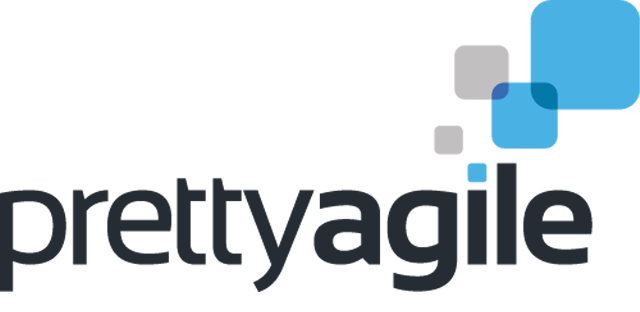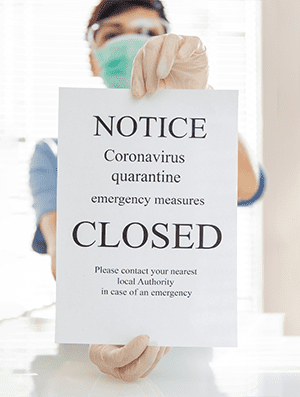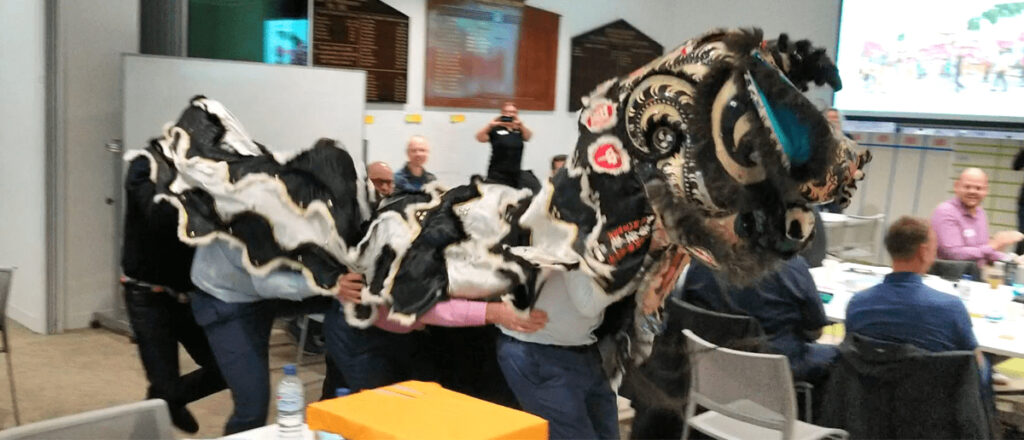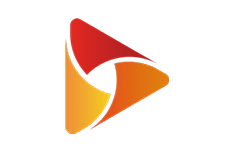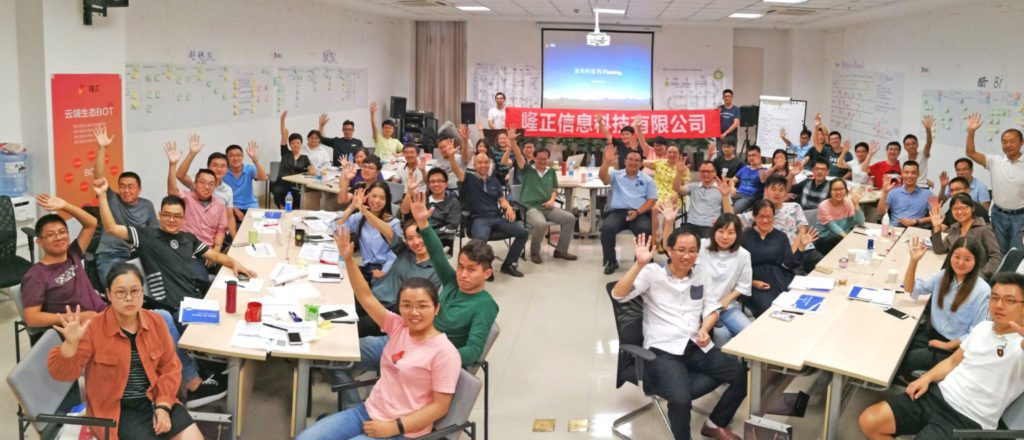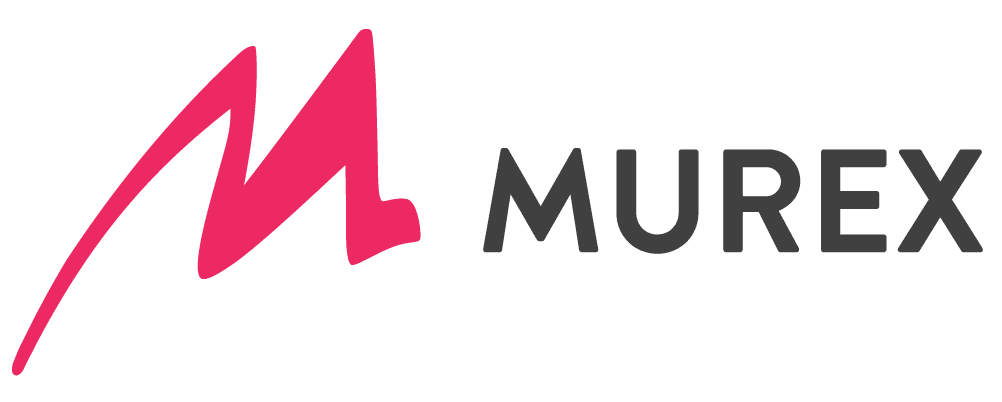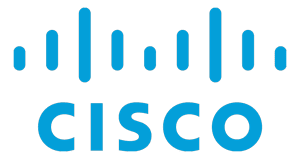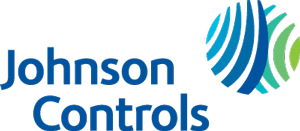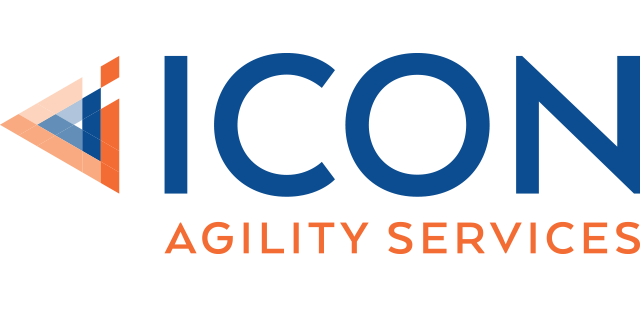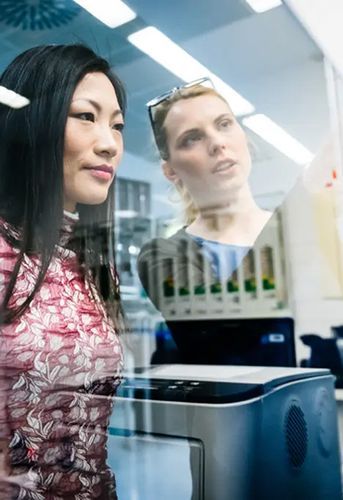
“By partnering with Accenture to introduce SAFe, we expect to break down departmental barriers, achieve total agility from strategy to execution, and ensure the deep integration of business and technology, thereby accelerating product innovation and service optimization and enhancing market competitiveness.”
—Pengcheng Guo, Chief Technology Officer, CCBSCF
Introduction
China Construction Bank Supply Chain Financial Company (CCBSCF) is a state-owned financial services company that has implemented SAFe across three different business lines. Their Lean-Agile transformation linked multiple functional teams such as marketing, product, R&D, testing, and PMO to form three Agile Release Trains covering more than 200 employees. They have completed 6 PIs so far, achieving real improvement in demand management transparency and customer value delivery efficiency, and are still in the process of continuous optimization.
To understand their success and how they achieved this transformation, we have the following insights from Pengcheng Guo, Chief Technology Officer at CCBSCF:
Q: What was the biggest goal or challenge driving your SAFe transformation?
A: The biggest challenge in promoting SAFe in CCBSCF was that it often adopts the traditional sectional management mode, and there is a severe department silo, with each functional team in charge of its own business, which causes inefficient cooperation. At the same time, the technology team used the traditional waterfall mode of development, and in the process of promoting the projects of long-cycle and large teams, the degree of information transparency is insufficient.
The problems that impede the enhancement of quality and efficiency are concealed, which is not conducive to optimizing Improvement. The organizational formation and history form a massive resistance to SAFe transformation. The biggest goal of promoting SAFe transformation is to overcome these resistances, realize business agility, and improve the quality and efficiency of customer value delivery.
Q: What methodologies or approaches did you try before SAFe?
A: Before introducing SAFe, CCBSCF had tried to implement a two-week iteration of the small waterfall working model, such as focusing on development work in the first week and testing in the second week. In addition, we also adopted a project-based management model, which aimed to facilitate the mobilization of technical team resources and management cost inputs. However, these approaches did not solve the problem of functional team departmental walls and needed to be more conducive to the transparent transfer of information.
Q: What inspired you to choose SAFe specifically?
A: To improve the quality and efficiency of customer value delivery, the industry’s leading consulting firm, Accenture, introduced SAFe to CCBSCF. The primary reason for choosing SAFe as the primary transformation Framework includes:
- SAFe is a business agility framework that creates a mechanism for cross-functional collaboration between business and technical role teams, helping to reduce the impact of departmental silos and improve the quality and efficiency of customer value delivery.
- SAFe is an enterprise-level framework that provides solutions for the overall optimization of the enterprise, covering multiple levels from the top level of strategic budgeting to the bottom level of requirements implementation, rather than just optimizing for a functional team or a product line.
- SAFe contains Lean thinking and emphasizes the flow of value and the transparency of information in the process.
- The SAFe DevOps helps CCBSCF build relevant pipeline tools and indicator systems, guiding each team to continuous improvement through data analysis, and is conducive to the overall digital transformation of the company’s management in the future.
By partnering with Accenture to introduce SAFe, we expect to break down departmental barriers, achieve total agility from strategy to execution, and ensure the deep integration of business and technology, thereby accelerating product innovation and service optimization and enhancing market competitiveness.
Q: What are the biggest improvements you’ve seen since implementing SAFe?
- The main improvements achieved since the adoption of the SAFe include improved transparency of production and research work. Before the transformation, the market business team was not satisfied with the transparency of the work and did not understand the specific progress of the requirements or the actual basis for the scheduling of the requirements. There were also challenges and questions about the workload estimation and risk judgment of the team.
During the transformation process, the ART utilized DevOps tool management and demand progress communication mechanism to maintain close communication with the market business team. At the same time, the Agile team level utilized KANBAN, daily standup meetings and other mechanisms to pull through information to the managers to ensure that resource usage and risk issues could be understood.
After the improvement, the production and research work capacity has dramatically improved. - We also have seen dramatic improvement in value delivery efficiency. Before the transformation, the company’s business was affected by factors such as poor efficiency in production and research, long waiting times for requirements to go live, an increasing number of accumulated unrealized requirements, and low customer and business satisfaction with production and research services.
During the transformation process, first, by establishing ART and Agile teams, the problems hindering the efficiency of the production and research process were fully exposed, and various waiting wastes in the process were eliminated through architectural decoupling and division of labor optimization. Secondly, through VMO and Requirement Value Post-Assessment Mechanism, production research resources are linked with the company’s core strategic work to ensure that production research resources are focused on high-priority requirements and achieve corresponding results as soon as possible. Thirdly, we utilized various product and technology methods to build standard products for modules with high repetitiveness and high consumption of resources to strengthen the reuse of product modules and technical services and save resource investment.
After the improvement, the efficiency of production and research work has been significantly improved, and the three columns of value stream train teams that have completed the transformation have all enhanced their business value delivery efficiency by more than 40% compared with the pre-transformation period. The total number of accumulated unrealized requirements has dropped, and the number of historical legacy requirements continues to decrease. There is an inflection point where the time to go online for demand is shortened. - Another improvement we saw is a strengthening of the digital management capability of production and research. Before the transformation, the team needed to have standardized DevOps tools, and some of the requirements needed to be recorded in the performance tools in a timely and accurate manner. We need more comprehensive and systematic digital management tools on the organizational level. At the same time, the production and research metrics could have been better. Quality and performance metrics must be integrated into more granular lines of business and teams. The metrics results relied on manual calculations, which could not be accurately generated promptly.
During the transformation, based on the SAFe methodology, we reconstructed the requirements management function in the DevOps tool. We added the function of cross-ART requirements dependency management, which supports the entire life cycle management of requirements from when they are proposed to when they are completed and deployed to the production environment. At the same time, the quality and efficiency metrics of R&D work have been reformulated, and the relevant metrics support splitting to each ART and Agile team. The results can be generated quickly and accurately through the DevOps tool.
After the improvement, the digital management system of R&D work has been enhanced, and there is more data support for problem positioning, optimization effect, and team performance evaluation, which is conducive to more objective and scientific continuous improvement of R&D work. - Finally, we’ve seen that business and technology are more closely connected. Before the transformation, business, and technology worked separately, with businesses building products and services for the market focusing more on specialized areas of work without forming a synergy to enhance customer value.
During the transformation, business and technology cooperated deeply, and technology had the opportunity to understand the business scenarios more deeply, which made it possible for technology to empower business in depth.
After improvement, business and technology realize closer integration. For example, in the review of customer transaction materials, the use of OCR and NLP and other AI technologies, significantly improving the efficiency of material review and saving the company’s operating costs; in the process of platform data transmission, the application of blockchain technology to ensure the security of data tamper-proof, to further enhance the protection of the service compliance.
Q: Beyond the business benefits, how has this enhanced jobs or the company culture on a human level?
A: Since adopting SAFe to drive the Lean-Agile transformation, the company’s culture has realized enhancements in the following areas:
- Equal cooperation and active complementary position among team members: Previously each functional team was in charge of its business, and team members are now gradually breaking down the original departmental barriers and roles. They are working cross-team towards the common goal of delivering high quality and efficiency in customer value and practicing customer-centered service. In addition, team members have the opportunity to have their opinions heard. By conducting regular NPS questionnaires and practicing the Gemba Walk mechanism, managers can understand the ideas of frontline employees and provide timely feedback.
- Managers have a sense of coaching management. They are no longer command-control managers, or relying on some experts to manage teams, but instead, identify problems with front-line teams and try to solve them together. The content of management work has gradually changed from uploading tasks to building a cooperation platform, teaching standard methods of problem analysis and solutions, assisting in eliminating possible obstacles, and promoting optimized solutions that have been proven successful and feasible, etc. The management team has also developed a sense of coaching.
- Build a learning organization gradually: Several business line teams organize regular CoP activities, where team members actively share theoretical knowledge and practical experience and jointly discuss the problems and countermeasures faced during the transition period. In this atmosphere of active sharing, the team is more adaptable and innovative.
Q: When you look at the SAFe journey overall, what are you most proud of?
A: Looking back on SAFe’s practical journey, we are most proud of the following three aspects:
- Transformation Scaled: During the transformation for more than one year, we introduced the CEO and all management colleagues of the company to identify value streams and set up three Agile Release Trains for different types of business lines, such as customer-oriented solution delivery, public operation service, and middleware tech service, spanning various roles, such as marketing, product, R&D, testing and PMO, and led a team of more than 200 employees to realize Lean-Agile transformation.
- Actual improvement effect: After 6 PIs, each train and Agile team identified a series of problems hindering quality and efficiency improvement with the help of the SAFe. The team’s delivery efficiency has been significantly improved through process optimization and structural upgrading, and the transparency of production and research work has been dramatically enhanced. By efficiently utilizing production and research resources, the SAFe transformation work achieved a positive input/output ratio.
- Exploration and Innovation in Transformation: Based on the SAFe, we have innovated and practiced several specific mechanisms, including designing a cross-ART communication mechanism to realize efficient collaboration among multiple ARTs and improving the process of requirements refining. Achieving a balance between determining requirement content and monitoring requirements implementation through a two-level feature grooming mechanism based on the nature of the features.
Back to: All Case Studies
Suggested Case Study: Royal Philips



